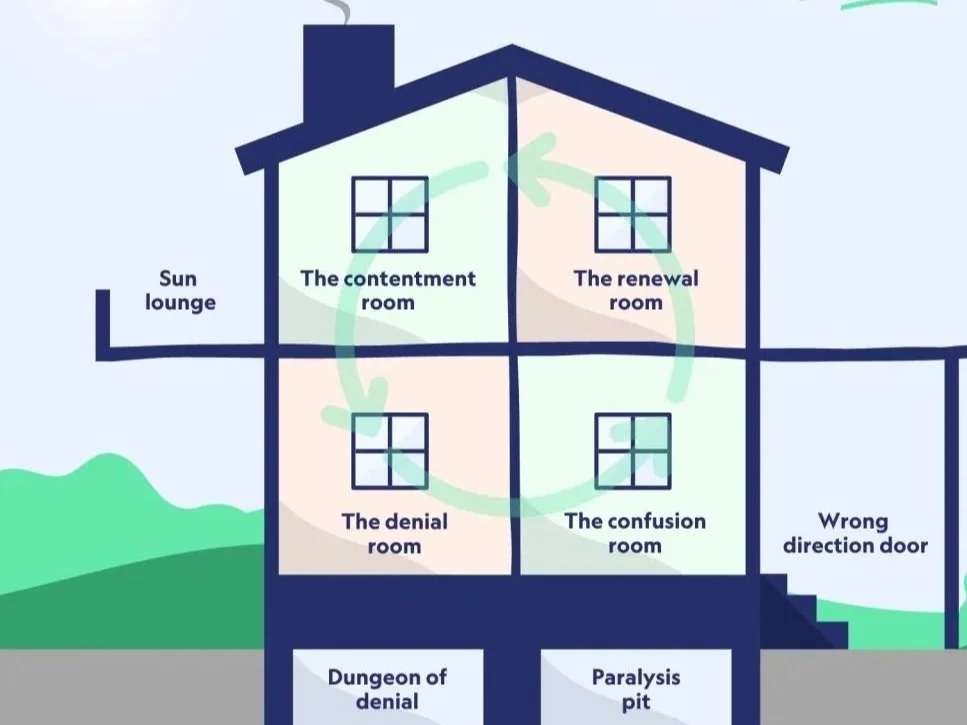EMBRACING THE TRANSFORMATIVE POTENTIAL OF YOGA
Last weekend, you took your first steps into the Yamas and Niyamas, and next week, we will journey deeper into the Niyama of Swadhyaya—Self-enquiry. This is an exciting chapter in your yoga practice, where you'll begin to discover the essence of who you are on a much deeper level.
Swadhyaya invites us to explore ourselves fully—Swa means “the self,” and adhyaya means “study.” It’s about becoming more aware of every aspect of who we are, from the physical to the emotional, and even the subtle layers we may not always notice.
Yoga, at its core, is all about becoming more aware of who we are, beyond the surface. As you already know, it is not just about mastering asanas. It is a journey of transformation, and each of you has been guided to this teacher training with an intention to grow. Whether you aspire to teach or simply wish to evolve personally, this process is a step toward becoming a more authentic version of yourself—an inspiration to others just by being you.
As we delve into this week’s practice, we will also explore a chapter of your life, one that may stir up memories or experiences you haven't visited in a while. This can be intense, but please know that this process is designed to help you, not overwhelm you. And you are in a safe space, always in control and can decide the intensity of the process. You can pause or stop the process at any time.
We have been guiding students through this process for many years, and it has become a well-established part of our training. It plays a pivotal role in the profound changes our students experience, both during and after the training. Our role is to ask you relevent question so that you can also develop new way to see life to create a fertile ground for a lighter happier future. Through the tools of yoga.
GOING INSIDE IS THE ONLY WAY OUT
Here’s why this process is important:
It helps you pinpoint where you are in your life’s journey (Point A) so that you can move toward where you want to go (Point B).
It will cultivate acceptance, bringing freedom through the power of self-awareness.
This process will help us open the passage to our subconscious. It is like opening the windows of our long-closed basement to let it ventilate. Some of the rotten smell is already out by that and we start to feel lighter in the long term.
Once we have prepared the ground, the seeds of life can grow. As you will discover yoga is a life management system
It ensures we (avoid falling) don’t fall into the trap of spiritual bypassing, where we avoid deeper issues by focusing only on the surface.
What’s crucial for you to understand:
We are not here to “fix” anything.
This is not therapy or psychology.
Our role as facilitators is to guide you away from bypassing what’s real for you.
You carry the full liberty to decide the intensity of the process and your sharings
You can always stop the process
We will be there to hold space for you, with presence and compassion.
UNDERSTANDING CHANGE & transformation
The Change House (Copyright The Virtual Training Team)
Wrong Direction Door
Alternatively, we can also end up going through the ‘Wrong direction door’ out of the Room of confusion. This is when we believe we have found the correct response to the change and move forwards, only to choose the wrong direction. Hopefully, with a change management model in place, you can avoid going through the ‘Wrong direction door’.
4. Room of Renewal
This is where we have ultimately made up our minds; we form a plan and a new way forward, and we feel empowered or invigorated to move on.
We create energy for the new way forward, putting a greater emphasis on creativity and support, helping others who are going through the same change to adapt and find their own new normal.
This sharing of feelings, thoughts and experiences encourages conscious engagement in the change, so it can be seen as increasingly positive rather than negative.
Change seems to be a constant in our lives. Whether we realise it or not, we are always in some stage of a change cycle, whether big or small. Understanding the personal journey we experience during times of change helps us build crucial skills for managing it successfully.
Personal growth is an ongoing process, a continuing journey of development, which means that change, renewal, and reinvention are with us all the time.
One of the better change management models to explain this is the change house.
Let’s take a look into the rooms of the house:
1. Room of Contentment
When life is good, we stay in the room of contentment. It’s the mindset that represents when we’re content with what we have and how our life is progressing. This can be in respect to our ‘big picture’ view or specific areas of our life like work, relationships, or life situations. Sometimes, we’re so content, that we move out onto the ‘Sun lounge’ of contentment. This indicates an even more relaxed mindset as we bask in the sunshine of our perceived perfect world.
This is when change happens.
Something happens to disrupt this contentment and moves us into the…
2. Room of Denial
This room is when the change first occurs, and we initially believe that it won’t affect us or doesn’t apply to us. We fail to see the potential threat to our current way of life and instead continue to believe that everything is okay or that the change will eventually ‘blow over’.
This denial is chiefly focused on the impact it will have upon us specifically, rather than a denial that the change is happening at all. At the extreme end of this scale is the ‘Dungeon of denial’. Sometimes, we can get stuck in denial and we end up in this lower room by burying our heads in the sand and ignoring what’s happening around us.
3. Room of Confusion
Eventually, we wake up to the situation around us. We finally realise that something is different, but we still don’t know how to respond appropriately to it.
Emotions tend to run high with anxiety or fear as we assess the situation we are in and we experience a myriad of feelings associated with that. This is one of ‘states’ where we may be in most need of a change management model- no one wants to feel stressed or anxious, but recognising that it is part of change can help us mitigate it.
Most of us will find ourselves doing a great deal of analysis in this room, around the correct direction we should take, but at last, we have finally recognised that change is needed and must be embraced.
However, like the Room of denial, the Room of confusion also has a dungeon; aptly named the ‘Pit of Paralysis’.We go to this room when there is simply too much to consider; we become overwhelmed with the numerous ways to respond to change and end up doing nothing. We are paralysed by our own uncertainty and confusion about the best way to move forward.

